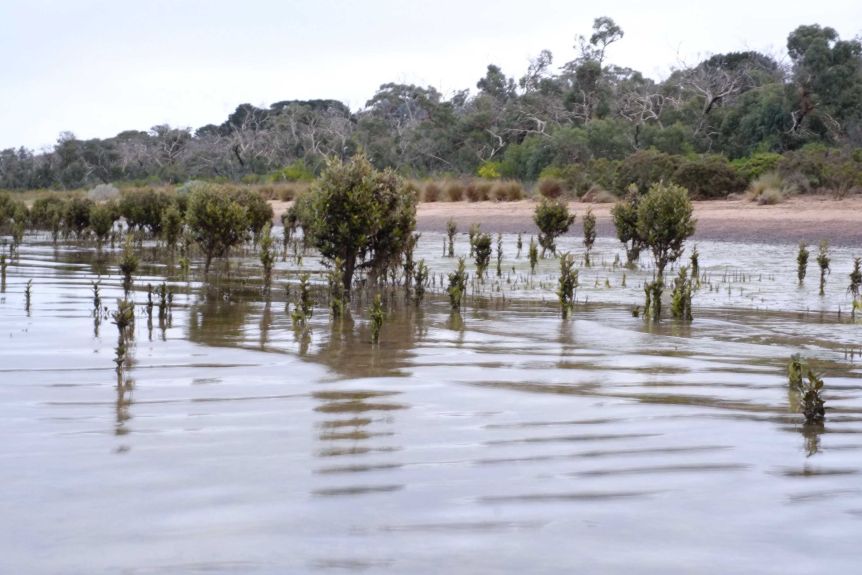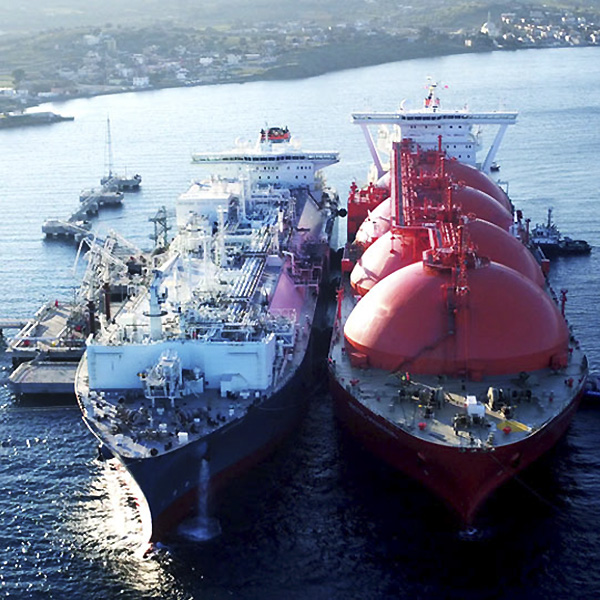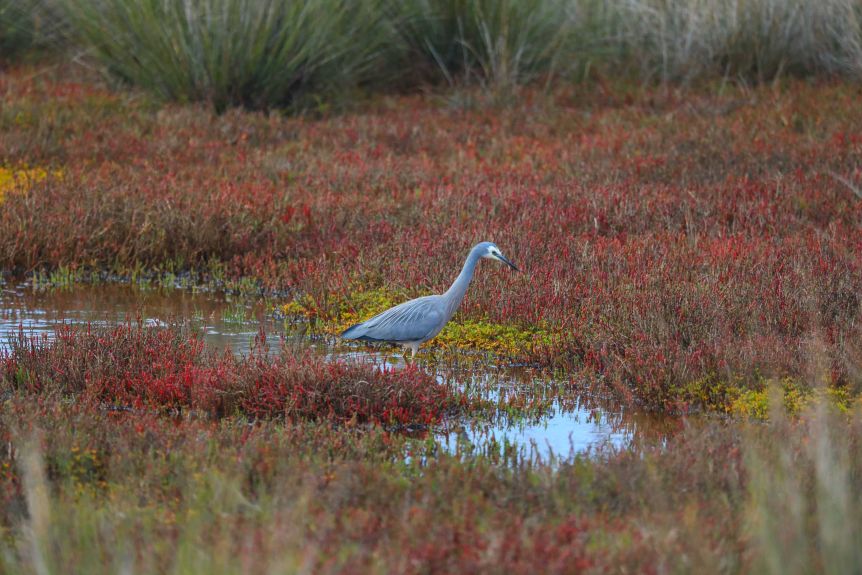Example of an LNG tanker ship next to a floating storage and regasification unit (FSRU). Both are approximately 300 metres long
Lighter Footprints joined Environment Victoria, Save Westernport Bay and other organisations to protest against the proposed AGL Gas Import Jetty Project and pipeline.
Background
“AGL is proposing to develop a project that would supply imported natural gas into the south-eastern Australian states for industrial, commercial and residential gas customers, meeting a projected domestic gas supply shortfall and improving gas supply certainty from 2024 or earlier. The gas would be transported as liquified natural gas (LNG), most likely from overseas, transferred to another ship and converted from liquid form back into gas on that ship and then piped into the Victorian Transmission System (VTS).
The ship, known as a floating storage and regasification unit (FSRU) Esperanza 2 would be continuously moored at Berth 2 of Crib Point Jetty. Depending on demand, between 12 to 40 LNG ships per year would moor alongside the FSRU at Crib Point to resupply the FSRU with LNG. The proposed gas import jetty would be connected by a new gas pipeline approximately 57 km long, into the VTS, east of Pakenham. The pipeline would be developed and constructed by APA Group.” Source: AGL website
Location
Crib Point is located in Western Port Bay, an international Ramsar site. One of the important functions, and a primary purpose for the establishment of the Convention, is to protect sites in different countries that are important for migratory birds. The Westernport Bay Ramsar site contains rare white mangroves, habitat for migratory birds, sixteen flora species of conservation significance, three nationally threatened land bird species, and two species of swifts are international migrants and a diversity of marine invertebrates. For a summary of the WPB Ramsar management plan listing species and showing maps see Western-Port-Ramsar-Site-Management-Plan-Summary

The FSRU would be moored inside the Ramsar boundary next to mangroves, next to a known Orange-bellied Parrot nesting site and next to French Island National Park. A detailed map showing the exact location of the FSRU and the pipeline route can be found in AGL’s introduction to the project here: GIJPP EES Chapter 1 Introduction_0
A selection of our submissions
In all, Lighter Footprints submitted over 15 submissions. The following selection shows the different approaches that were taken and the variety of issues addressed.
- The Lighter Footprints submission focused on two key aspects, 1) the economics of the project and 2) misalignment of AGL’s proposal with legislative objectives. Lighter Footprints ETG – AGL Westernport FINAL
- David Strang wrote as a previous CFO in the gas industry. He gave three reasons why the project should not proceed. 1. Victoria will transition away from gas over the coming years, 2.Victoria may face possible tariffs from international customers if adequate steps are not taken to curtail the use of fossil fuels, 3.The imbalance between risk and cost. David Strang submission
- Carmel McNaught focused on the need to consider Cumulative Risk Assessment (CRA) as an essential element in making an environmental impact assessment of any multidimensional project. CRA needed_Carmel McN_23Aug20
- David Kennedy wrote from his experience as a scuba and expressed concern about the huge volume of cold, chlorinated water (nearly 4 Port Phillip Bays over 20 years) being pumped into Westernport Bay, and the high risk of a thermocline. WesternPortBay_David MK
- Peter Mulherin told a personal story. He owns vulnerable lowland indigenous bush within the catchment of Westernport Bay and is re-wilding the land. He has a Trust For Nature covenant on the property, has worked with Melbourne Water and LandCare, and feels undermined by the proposal. Peter Mulherin submission
- Joy Mettam was concerned about environmental aspects and gaps in the assessment process. AGL Crib Point submission_Joy M
- Mark Wills focused on the contribution of gas to global warming and low-cost alternative renewable technologies.
- Ray Peck focused on the size of the FSRU, the inappropriateness of the location – a Ramsar area, and the risk of a rollover/boil-over incident occurring.Ray Peck submission Gas Import Jetty Works at Westernport Bay
- Several people used Environment Victoria’s online tool to create their submissions. Two examples are provided:
Joan Selby-Smith AGL proposal submission_JoanSS
Shirley Mitchell Shirley Mitchell submission
Acknowledgements
Lighter Footprints (LF) commends Environment Victoria and Save Westernport Bay for coordinating the case against the AGL proposal. Victor Komarovsky, Community Organiser, EV ran a dedicated Zoom meeting for LF. He was particularly helpful and supportive during the submission development process. Sue King suggested that Lighter Footprints participate in the campaign and contributed many useful documents, ideas and pointers.
Ray Peck


